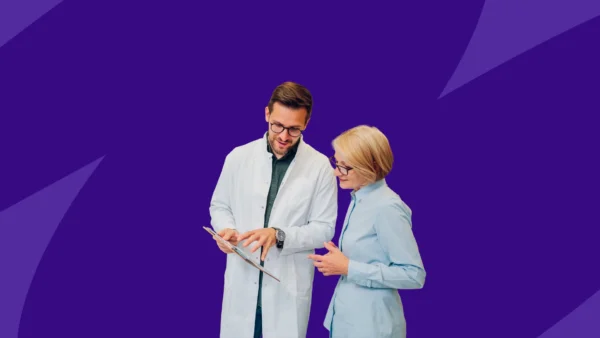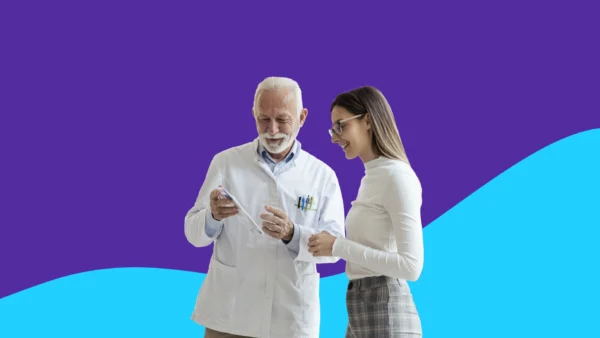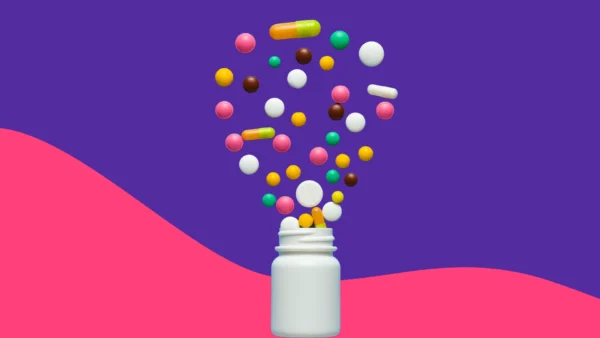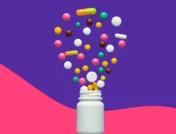In the United States alone, more than 4 billion prescriptions are filled every month to treat various illnesses. Some of these medications carry a risk of rare but serious drug reactions that could land a person in the emergency room. Due to a lack of recognition and a paucity of communication between patients and healthcare providers, millions of reactions may go unreported every year. Fortunately, there are ways pharmacists can help to identify adverse drug actions.
Types of reactions to medications
Even thinking about your patients having a medication reaction can be frightening. While most reactions are mild and easy to manage, some can be severe and even life-threatening.
The first step in identifying or managing a medication reaction is knowing what you’re dealing with. Drug reactions may be immunologic or non-immunologic. Meaning, they may be caused by the immune system or other factors.
Immunologic reactions
Immunologic reactions are reactions that involve a response by the immune system to a drug. Otherwise known as hypersensitivity or allergic reactions, these types of reactions can come in various forms and cause different symptoms, including itching, rash, hives, and flushing of the skin. Examples of hypersensitivity reactions include anaphylaxis, which can cause swelling of the throat and trouble breathing, and Stevens-Johnson syndrome, which can cause blisters and severe rash on the skin. These types of reactions can be severe and require immediate medical attention.
Nonimmunologic reactions
Nonimmunologic reactions are reactions that don’t involve the immune system and are not typically considered true allergic reactions. Instead, these non-allergic adverse reactions may be caused by the drug itself or unknown reasons. These types of reactions include drug toxicity, drug intolerance, and idiosyncratic reactions. Usual drug side effects and interactions also fall under nonimmunologic reactions, which make up the majority of reactions experienced while taking a medication.
Symptoms of an adverse drug reaction
An adverse drug reaction is any undesirable or harmful effect caused by taking a medication. This can be anything from a mild headache to coma or death.
There are many different symptoms of an adverse drug reaction, and they vary depending on the type of drug your patients are taking and how they react to it. If your patients have recently started a new medication or changed dosage of an existing medication, some symptoms of adverse drug reactions may include:
- Nausea/vomiting
- Throat tightness
- Difficulty swallowing
- Trouble breathing
- Chest pain
- Fast heartbeat
- Chest tightness/pressure
- Fainting; feeling faint when standing up too quickly
- Dizziness
- Abdominal cramps
- Diarrhea
- Fever
- Weakness/fatigue/tiredness
- Muscle cramps/weakness
- Rash/hives
- Swelling of the face, lips, tongue, or throat
The adverse drug reaction symptoms listed here are not exhaustive, but they may give you a good idea of the way some medications can affect your patients’ health. If you suspect that your patient is experiencing an adverse drug reaction, it is important to advise them to seek medical attention as soon as possible.
Most common culprits of reactions
Some types of medications are linked to adverse reactions more than others. Meaning, if your patients take one of these types of prescriptions, it might not hurt to check in with them more often. These medications include:
Antibiotics
Antibiotics are the most common medications that cause allergic reactions. Many antibiotics, such as penicillin, amoxicillin, and cephalexin, can cause rash, hives, or itching in people with antibiotic sensitivity. Many people also experience diarrhea and nausea, which are signs of drug intolerance.
NSAIDs
Nonsteroidal anti-inflammatory drugs (NSAIDs), including aspirin, naproxen, and ibuprofen, can also cause allergic reactions. In addition, NSAIDs carry a risk of serious adverse events, such as heart attack, stroke, stomach ulcers, and gastrointestinal bleeding.
Antiretrovirals
Many antiretroviral drugs, such as efavirenz, zidovudine, and didanosine, are known to carry a potential risk of severe allergic reactions. These reactions are more likely to occur after first starting treatment. People with hypersensitivity to antiretroviral drugs may experience rash and fever.
Anticonvulsants
Certain anticonvulsants, such as carbamazepine and phenytoin, are associated with allergic reactions, including hives and rash. A serious reaction can develop one to eight weeks after starting treatment with symptoms like rash and fever. Other reactions include lupus erythematosus and toxic epidermal necrolysis.
Antihypertensives
Some blood pressure medications, such as furosemide, hydrochlorothiazide, and hydralazine, have been reported to cause allergic reactions. ACE inhibitors, such as lisinopril, are associated with rare, non-allergic adverse effects, namely a dry cough.
Contrast dyes
Contrast dyes are commonly ingested before a radiologic procedure, such as an X-ray. However, they are often linked to allergic reactions and symptoms like hives, rash, and itching that can occur more than a day after taking it. Examples of contrast dyes include barium-sulfate and iodine-based agents.
Chemotherapy
Chemotherapy drugs, such as paclitaxel, docetaxel, and procarbazine, can also cause allergic reactions, including anaphylaxis. Chemotherapy targets cancer cells and can affect other healthy cells in the body, leading to adverse reactions. Adverse reactions to chemotherapy include hair loss, nausea, and vomiting.
Insulin
Insulin is commonly associated with dose-related adverse effects. Using too much insulin can lead to low blood sugar or hypoglycemia, which can be severe and life-threatening. As one of the most common culprits of drug reactions, insulin should be carefully used as prescribed.
While these are the most common, adverse drug reactions are possible with other medications.
How to counsel patients about drug reactions
When you’re talking to patients about adverse reactions, remind them to first take a deep breath and relax. It can be frightening if they think they are having an allergic reaction to a new medication, but the vast majority of these cases are mild and self-limiting.
For patients with a history of allergies, it is important that they are aware of potential signs of an allergic reaction. If this happens, explain that they should stop taking the medication and see their provider immediately. It is also important that they get advice from their doctor or pharmacist before taking any new medication, as they may be able to identify any possible problems before they occur.
Patients should keep in mind that many drug reactions don’t cause symptoms right away—they may take hours or days before they start showing up. If the symptoms are mild and go away within 24 hours without other problems, chances are good that it was just a side effect of the medication, not an adverse reaction.
RELATED: How to take care of your senior patients | Getting patients back on meds
How patients can prevent a reaction
It’s normal to worry about a potential reaction to a new medication. But there are steps you can explain to patients to help them prevent an adverse drug reaction. Advise them to:
Know their allergies. If patients have experienced an allergic reaction to any medications in the past, make sure they know to take note of them and tell their healthcare provider. Even if they’ve experienced a reaction to a different drug in the past, they may be prescribed a new drug that’s in the same class of medications, which can lead to an adverse reaction.
Ask questions if patients are unsure about anything related to the medicine—including side effects, dosing instructions, and what to do if they miss a dose. They shouldn’t be afraid to ask for clarification or double-check that they understand everything correctly before leaving the pharmacy and starting the new drug.
Discuss alternatives. If possible, patients should talk about all the options for treating a condition before agreeing on a particular course of treatment with their providers. This may help avoid unnecessary side effects from certain drugs and make it easier for them to stick with treatment over time (which is important).
The bottom line
Patients should always consult with their pharmacist and provider if they experience any side effects from taking a new medication. It’s also important that pharmacists help them learn to spot the signs of a bad reaction themselves. If you have patients about to start a new prescription, take some time to review the accompanying material with them and check out this list. That way, you can minimize the chances of a bad reaction for your patients by helping them recognize the symptoms early on.











